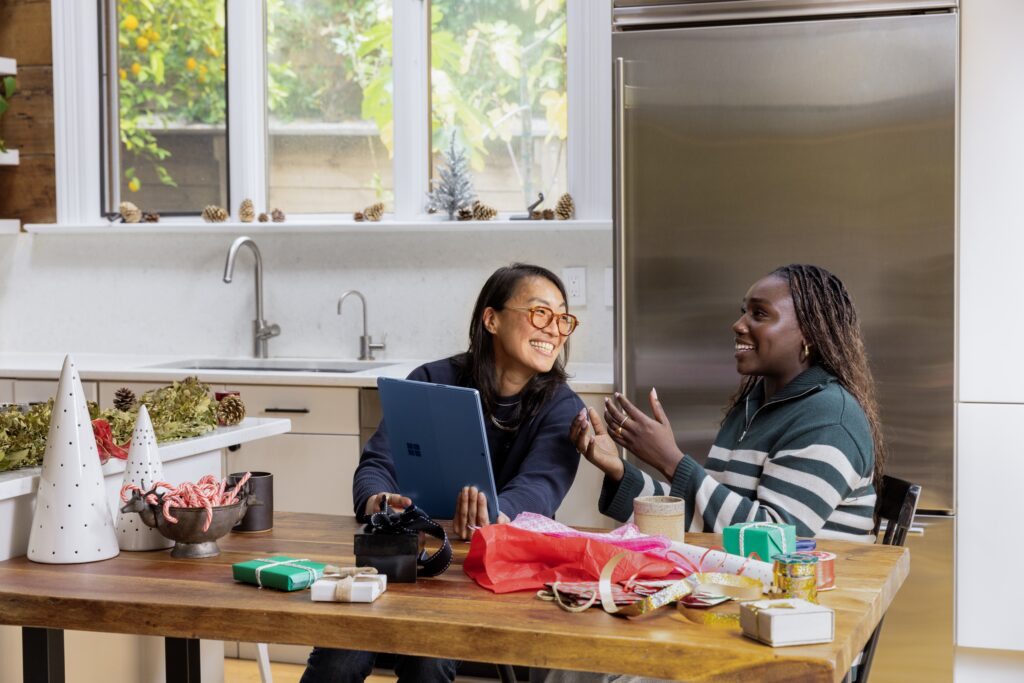Introduction
In today’s world, where conversation is a key to unlocking new doors, some introverts are exploring the path from quiet contemplation to engaging banter. They believe in change, in their ability to reshape their social canvas from solitary to social butterfly 🦋. This shift, known as the introvert to extrovert transition, isn’t about becoming someone else—it’s about enhancing who they already are, adding new layers to their personality. It’s a brave, bold move they’re ready to embrace. This article lays out effective tactics for anyone looking to weave smoother casual conversations into the fabric of their daily interactions. With simple, clear advice, it’s a practical guide for those ready to expand their conversational horizons.

Finding Common Ground for Relatable Conversations
Before diving into the nuances of casual conversation, it’s insightful for introverts to understand their starting point. Taking an introvert test can shed light on one’s personal conversational style and preferences, serving as a baseline for growth. It’s not just about identifying as an introvert; it’s about recognizing the unique nuances of one’s introversion.
Once they have clarity on their introverted nature, they can begin the journey of expanding their social skills. Finding common ground is the cornerstone of relatable conversations. Introverts often have a wealth of knowledge and interests. By identifying shared passions or experiences, they lay a strong foundation for dialogue that feels natural and engaging. This doesn’t mean they have to be a jack-of-all-trades; rather, it’s about recognizing those shared human experiences that resonate on a deeper level.
For introverts, preparation goes a long way. Before entering social situations, they might find it helpful to think of a few broad topics that are universally relatable—like books, movies, travel, or food. These are safe harbors in the vast sea of dialogue. Keeping up with current events and culture provides a shared context that can make finding common ground much easier.
Introverts are naturally reflective, and this can be their superpower in conversations. By listening actively and responding thoughtfully, they show genuine interest, which can be incredibly engaging. It’s about quality over quantity; one well-placed question or comment can propel a conversation forward more effectively than many superficial remarks.
However, the objective isn’t to change who they are; it’s to grow more comfortable in sharing their thoughts and engaging with others. It’s about stretching their social muscles, not replacing them. With each attempt, the process becomes a bit more natural, turning what once felt like a daunting challenge into a rewarding, enjoyable experience.
By starting with common ground, introverts can ease into conversations, setting the stage for more complex and rewarding interactions. They don’t have to become extroverts; they just need to learn the dance of dialogue that works for them.

The Power of Humor in Making Conversations Smoother
As our introverted readers begin to weave the fabric of conversation, joining the intro to extro community can be a game-changer. Here, they can discuss and practice the nuanced art of conversation with like-minded individuals. The community offers a platform for sharing experiences and techniques, such as the use of humor to smooth over the edges of interaction.
Humor is a powerful tool—it breaks down barriers and builds connections. But it’s not about reciting jokes; it’s about finding the light-hearted side of everyday observations. For the analytical introvert, humor can stem from a clever twist on a common situation or a witty, insightful comment on a shared experience. It’s about finding those moments of absurdity in daily life that everyone can relate to.
Introverts often observe more than they speak, and this can work to their advantage. Their observations can turn into humorous quips that resonate with others. The key is timing and delivery; the same words that may fall flat in one context can sparkle with wit in another. It’s also important to stay true to oneself—forced humor is no humor at all. It’s about finding a style that feels authentic, whether it’s dry wit, playful teasing, or self-deprecating humor.
Another aspect to consider is the diverse forms of humor across cultures and personalities. What’s funny to one person might not be to another. A part of engaging effectively in conversation is reading the room and gauging the type of humor that will best suit the moment. This doesn’t mean shying away from humor; instead, it’s about adapting it to the audience.
By sharing a laugh, introverts can create a bond that paves the way for deeper, more meaningful interactions. It’s a signal that they’re on the same wavelength, making the conversational journey smoother and more enjoyable. Through humor, they can turn a simple chat into a memorable encounter, one that both they and their conversation partners look forward to repeating.

Maintaining Conversational Flow with Transitional Phrases
Building on the camaraderie formed through humor, the next step for introverts is to maintain that conversational momentum. They can find guidance in the intro to extro roadmap, a guide quite unlike others, which provides strategies tailored to their unique journey towards becoming more outgoing. It’s about keeping the dialogue flowing, without the pressure of constant wit or entertainment.
Maintaining conversational flow is akin to a dance where both partners move in sync with each other’s rhythm. It’s about passing the conversational ‘ball’ back and forth, with ease and without hogging it or letting it drop. For introverts, who might typically take a step back in conversations, learning to use transitional phrases can be immensely helpful. These phrases act as bridges, connecting one part of the conversation to the next, signaling that they are engaged and are following along.
The use of phrases like “Speaking of…” or “That reminds me…” can seamlessly lead into another topic or further exploration of the current one. This technique allows introverts to introduce their thoughts and ideas without the abruptness that can sometimes occur in less fluid conversations. It’s not about dominating the talk but contributing to its natural ebb and flow.
Introverts tend to think before they speak, which means they can be intentional about the direction of the conversation. With each transition, they have the opportunity to steer the discussion towards topics they are comfortable with or curious about, ensuring they remain engaged and the conversation remains interesting for both parties.
Moreover, being good at transitioning also means knowing how to navigate away from topics that are less comfortable or potentially contentious without causing awkwardness. It’s about reading the conversation’s cues and responding with agility and sensitivity.
The goal for introverts is not to keep a conversation going at all costs but to contribute to its depth and richness. By mastering the art of transitional phrases, they can participate in conversations that are not only smoother but also more fulfilling and balanced.

Using Compliments to Warm Up Conversations
In the subtle dance of dialogue, compliments serve as the gentle hand on the back that guides the flow. They are the warm-up act that sets the stage for a performance of words, easing both parties into a comfortable rhythm. For introverts, the act of giving compliments may not always come naturally, but it’s a powerful tactic for engaging in smoother casual conversations.
When an introvert offers a genuine compliment, it does more than just flatter—it shows attentiveness and appreciation for the other person. This can be especially impactful when the praise is specific and sincere, highlighting a unique trait or achievement rather than resorting to generalities. For instance, commenting on someone’s unusual necklace and asking about its origin can lead to a story, which then opens the door to a richer conversation.
However, the art of complimenting lies in the balance. Overdoing it can come off as ingratiate, while too little might not make the desired impact. An introvert’s natural tendency to observe and reflect can be advantageous here, allowing them to find the right moment and the right words that seem neither forced nor scarce.
By using compliments to warm up conversations, introverts can set a positive tone and create an environment where others feel seen and valued. This is not only pleasant but also encourages a reciprocal openness, leading to a dialogue that is both engaging and comfortable.
It’s essential, however, that compliments are not used as a crutch but as one of many tools in an introvert’s conversational toolkit. They are an opening note, not the whole symphony. As the conversation progresses, it’s important to build on that initial positive impression with substantive dialogue, ensuring that the warmth of the opening compliment carries through the entire conversation.
By integrating thoughtful praise into their conversational approach, introverts can foster a warm and engaging atmosphere that encourages a free and easy exchange of ideas and stories.
Avoiding Common Pitfalls in Casual Chats
Treading the conversational waters smoothly necessitates not just knowing what to say, but also what to avoid. For the introvert keen on engaging in smoother casual conversations, sidestepping common pitfalls is crucial. These are the conversational undercurrents that can quickly pull a light chat into the depths of discomfort.
One such pitfall is the tendency to monopolize the conversation with one’s own interests or stories, turning a dialogue into a monologue. An introvert’s rich inner world is a treasure trove of thoughts and ideas, but it’s important to ensure that sharing doesn’t become overbearing. Balance is key; a conversation is a two-way street.
Another misstep is the inadvertent venture into controversial or sensitive topics without prior rapport. While it’s natural for a conversation to traverse a variety of subjects, gauging the other person’s comfort level is essential. An analytical introvert can apply their natural observational skills to read verbal and non-verbal cues, ensuring the conversation remains within the bounds of comfort for both parties.
Interrupting or failing to listen can also disrupt the flow of exchange. Introverts may not always vie for the spotlight, but when they do have something to say, it’s important to wait for a natural pause. Active listening is an art that involves not just hearing words, but also understanding the emotions and intentions behind them. This attentiveness signals respect and encourages mutual engagement.
Lastly, oversharing personal information too soon can be off-putting. Casual conversations are just that—casual. They are not the right platform for deep secrets or life’s troubles. An introvert should aim to keep the tone light and the content appropriate for the level of acquaintance.
By avoiding these common conversational pitfalls, introverts can ensure that their forays into social dialogue are positive and inviting. It’s not about crafting a perfect conversation but about fostering an enjoyable and respectful exchange that may, in time, lead to deeper connections.
Techniques for Ending Conversations Gracefully
Conversations, like all good things, must eventually come to an end, and for introverts who have invested effort into ensuring smooth interactions, it’s important that this stage is handled with as much finesse as the rest. Mastering the technique of ending conversations gracefully is an essential skill, serving as the final brushstroke in the art of dialogue.
Ending a conversation doesn’t have to be abrupt or awkward; it can be a natural close that leaves both parties feeling content with the exchange. Introverts can use this opportunity to reinforce the connection that has been made, perhaps by summarizing a key point or expressing enjoyment over a shared laugh. This not only signals the end but also affirms the value of the interaction.
A simple, “It’s been great talking with you,” paired with a specific callback to part of the conversation, can be a comfortable and positive way to initiate parting. This brings a sense of closure that is both polite and personal. It’s like the gentle descent of a plane, signaling to the passenger that it’s time to prepare for landing.
Introverts may also offer a future-oriented comment, like “I’d love to hear more about that next time,” which suggests openness to future interactions without imposing an obligation. This leaves the door open for continued conversation at a later point, hinting at a budding relationship beyond the current encounter.
Moreover, suggesting the next steps, such as exchanging contact information or making tentative plans for a future meet-up, can be a good way to end on a proactive note. However, it’s important that these offers are genuine and that introverts are prepared to follow through.
By ending conversations with grace and positivity, introverts can ensure that their interactions are remembered fondly, encouraging both themselves and others to look forward to future conversations. It’s the graceful bow at the end of the performance, leaving the audience with a lasting impression of the show.
Conclusion
In the journey of conversation, introverts have the opportunity to turn perceived weaknesses into strengths. The tactics laid out in this guide provide a roadmap for navigating the social landscape with newfound confidence. From finding common ground to leveraging humor, from maintaining flow with transitional phrases to warming up exchanges with compliments, each strategy is a step towards enriching their conversational skills. By avoiding common pitfalls and learning to end dialogues with grace, introverts can transform casual conversations into meaningful connections.
This transformation is not about losing one’s identity but about enhancing the ability to share it with the world. Each conversation is a chance to learn, to connect, and to grow. Introverts are not alone in this; they are part of a community on a similar path, where each shared experience and exchanged story adds to the collective journey from introversion to a more extroverted engagement with the world around them. The road might be less traveled, but it is rich with potential for personal growth and fulfillment.
So, to the introverts reading this: embrace your analytical minds, your thoughtful nature, and your quiet strength. Use them as the tools they are to weave through the tapestry of social interaction. Change is not only possible, it is within reach, and it starts with the power of conversation.




